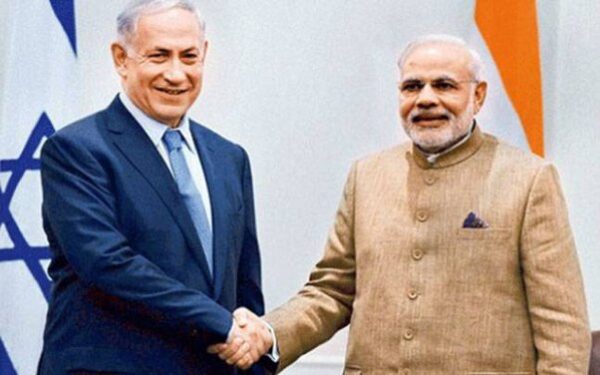Modi paid a high -level visit to Iran in May 2016. There, he signed an agreement for India to develop Chabahar and then, with the participation of the Afghan President at that time, Ashraf Ghani, signed a Tripartite agreement to connect Chabahar by Zahedan by train. The approved project is:
• Contracts for the development and operation of two terminals and five beds in Chabahar, spread in ten years.
• Extension of a $ 500 million credit path for ports and `3,000 crore ($ 500 million) to import steel rails and port implementation.
• MOUS regarding the provision of services by the Indian Railroad, including financing up to $ 1.6 billion, for the Chalang -Zahedan railroad track – which is also part of the trilateral agreement between India, Iran and Afghanistan on transit and trade corridors. However, in a year, Donald Trump was in the White House and all of these agreements were in vain.
Even when India’s relations with Saudi Arabia and other GCC countries have developed, US sanctions against Iran have limited Indo-Iran relations. The ‘maximum pressure’ policy of Trump’s administration, which requires that Iranian oil imports are reduced to zero from May 2019, meaning that the country moved from oil export number two to India to non-encountered status.
Once again, although the US provides neglect to the development of Chanilar Ports, it becomes very difficult to pursue construction activities, because international companies are afraid of being subject to US sanctions. This sanction also limits the relationship between trade with Iran, so that the activity in Chabahar decreases dramatically. Perhaps because of the absence of progress in developing this port, in July 2020, Iran announced that its own company will carry out the Chabarahar -Zazahan railroad tracks. Iran diplomatically says that Indian companies can rejoin the project in the next stage.
This negative development has created new challenges for India. In July-August 2020, the Iranian media and the New York Times brought a report on the extensive and ambitious and ambitious and ambitious and ambitious and ambitious’ strategic partnership that will involve Chinese investments of around $ 400 billion in Iranian energy, the infrastructure, industrial and defense sectors. There are also reports of closer relations between Chabahar and Gwadar Ports, and even the extension of the Chinese Economic Corridor project (CPEC) to connect with Iran and Afghanistan.
These reports, even if the time is to project to the US that the two countries in the hit list pursue important relations with each other, must sound alarm bells in India. Former US Diplomat Philip H. Gordon has written that even the partial implementation of the agreement ‘will indicate a major escaling in US strategic competition with China and blow holes in the “maximum pressure” campaign against Iran at the same time. In West Asia, Ross Harrison and Alex Vatanka have noted that both Iran and China shared motivation ‘to encourage US efforts in the Middle East’, and that the two countries can work together across the Eurasian Eurasian landscape – from Mediterranean to Syria to Central Asia, Kaspia and Bay.
Israel: Defence and Beyond
Modi brings ties with Israel long history of personal involvement. He visited Israel in 2006 as the main minister of Gujarat, and had encouraged Israeli investment and technology in the agriculture, milk and irrigation sectors of his country. As Prime Minister, he not only strengthens relations with Israel outside defense, but also makes interaction more open – ending previous practices has official involvement with the country.
Israel remains the main source of the Indian niche defense requirements, especially in the missile, including the joint development of long-distance surface-to-air (LRSAM) missiles for the Indian and Israeli Navy, and the upper medium surface-MRSAM Air Force (MRSAM) for the Air Force for the Air Force India. Outside of defense, India and Israel are partners in other high -tech areas related to agriculture, health, biotechnology, nanotechnology, desalination, recycling of wastewater, and waste management and re -processing. From 2018, the new area for bilateral cooperation that emerged was energy by signing the MoU of cooperation in the oil and gas sector.
During his first visit to Israel as Prime Minister in July 2017, the first by the Indian Prime Minister sitting, Modi hinted that Indian relations with Israel would be ‘decorated’ from its interaction with the Palestinian authority. He did this by not visiting Ramallah, like the practice of Indian leaders until then. But he tried to balance the two relationships: he accepted the Palestinian President Mahmoud Abbas, in Delhi, in May 2017, before his visit to Israel; He then made a separate and independent visit to Palestine in February 2018, a month after Netanyahu’s visit to India.
Apart from the clear Bonhomie between Modi and Netanyahu, several commentators have scored the demands of the demands. Ahead of Netanyahu’s visit, the Israeli daily, Haaretz brought an article that became the headline: “India wants an affair when he comes to Israel, not a serious relationship”. The author, Orshit Birvadker, tried to explain to his readers that India took a ‘balanced position’ between Israel and Palestine because he wanted to emphasize ‘political independence’ in international affairs. He also recommended that, while relations with Israel enjoyed Bipartisan support in India, both parties must ‘remain pragmatic in their engagement to each other and not let the sentiments obscure their decisions’. In the same line, Indian commentator Mohan Guruswamy wrote about bilateral defense ties that developed right after Modi’s visit to Israel, ‘They [Israeli] did not make help to us. These are all difficult cash and the rest are Israeli deception. ‘At this point, it will be useful to discuss diplomatic initiatives that have brought India to the new’ minilateral ‘West Asia – Quad 2.
